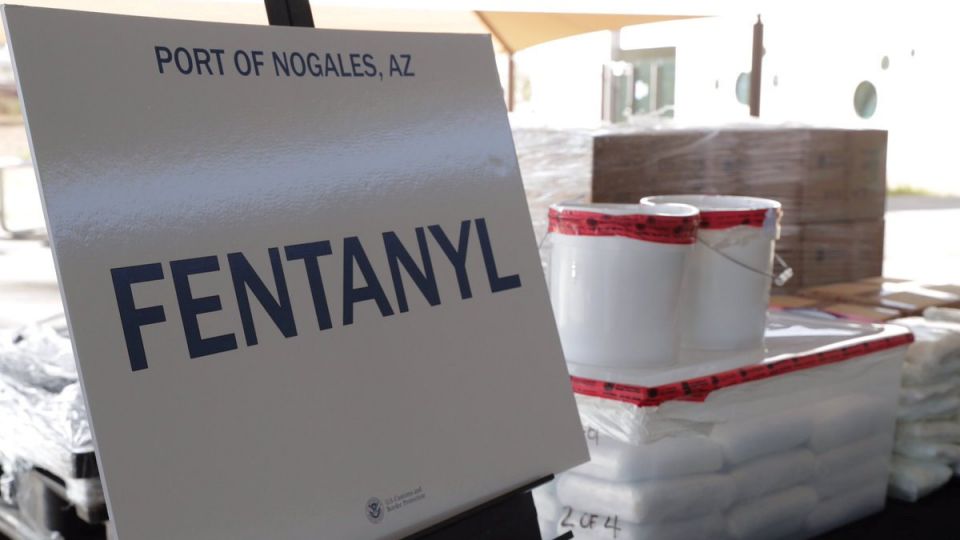April 5, 2019
The US say that fentanyl from China is contributing to a public health crisis.
Investigators in a small Maryland city about 70 miles northwest of Washington recently seized 2 kilograms of fentanyl-enough to kill about 1 million people.
The drug, a synthetic opioid 50 times more powerful than heroin and 100 times more potent than morphine, is legally prescribed to treat patients with chronic pain, especially after surgery.
But someone with a basic knowledge of chemistry could synthesize the drug using legally obtained ingredients, mix it with other illegal drugs or even harmless powder, and turn a quick profit. Criminals also slightly alter the chemical composition of the drug to evade the law.
As a prescription drug, fentanyl is marketed under names such as Actiq, Duragesic and Sublimaze.
The case in Hagerstown, Maryland, underscores United States law enforcement’s continuing battle against the deadly drug and highlights the need for international cooperation in eradicating it at the source.
In Beijing, Liu Yuejin, deputy director of the National Narcotics Control Commission, said on Monday that China would begin regulating all fentanyl-related drugs as a class of controlled substances.
“We firmly believe that listing the entire class of fentanyl substances will completely block the loopholes that enable lawbreakers to evade punishment by simply modifying one or several atoms,” Liu said. “It will effectively prevent the massive abuse of fentanyl substances and illegal drug trafficking.”
The US Drug Enforcement Administration supported China’s action.
“The DEA is pleased with China’s announcement to control fentanyl as a class, effective May 1, 2019,” Mary Brandenberger, a spokeswoman for the federal agency in Washington, told China Daily.
The New York Times quoted her as saying “We look forward to our continued collaboration with China to reduce the amount of this deadly poison coming into our country”.
China’s action is a needed step in combating fentanyl use, but it won’t end the scourge.
Writing in Foreign Affairs magazine, Bryce Pardo and Peter Reuter noted: “Even if China were successfully to crack down on fentanyl and fentanyl analogs, it would not fix America’s opioid problem. Any decrease in Chinese fentanyl production will be offset by a shift in production to one of many other nations with an entrepreneurial, lightly regulated chemical industry that has good connections to the US.
“India is an obvious candidate. Washington should continue to cooperate with China on drug control, but as long as US drug users demand illicit opioids, entrepreneurial chemists around the world will find a way to supply them,” wrote Pardo, an associate policy researcher at RAND Corp, and Reuter, a senior economist at RAND and a professor at the University of Maryland’s School of Public Policy and Department of Criminology.
In 2017, the most recent year with complete statistics, 59 percent of opioid-related deaths in the US involved fentanyl, up from 14.3 percent in 2010, the National Institute on Drug Abuse reported.
In 2016, about 63,000 Americans died of drug overdoses, including about 20,000 caused by fentanyl or other synthetic opioids, the Centers for Disease Control and Prevention reported.
Unlike heroin or cocaine, getting the illegal version of fentanyl into the US does not require an extensive distribution network requiring payoffs or bribes because it’s simply dropped in the mail.
In 2017, the US Postal Service handled 498 million international packages, up from about 275 million the year earlier. It lacks the personnel, equipment and funding to screen incoming packages.
Only about 36 percent of incoming packages have tracking data, making it difficult for US Customs and Border Protection to track down those sending illegal drugs into the US and making it all but certain fentanyl shipments are undetected.
Six individuals charged in the Maryland case, including two still at large, each face mandatory minimum sentences of decades in prison, if convicted, for engaging in a conspiracy to distribute the drug.


